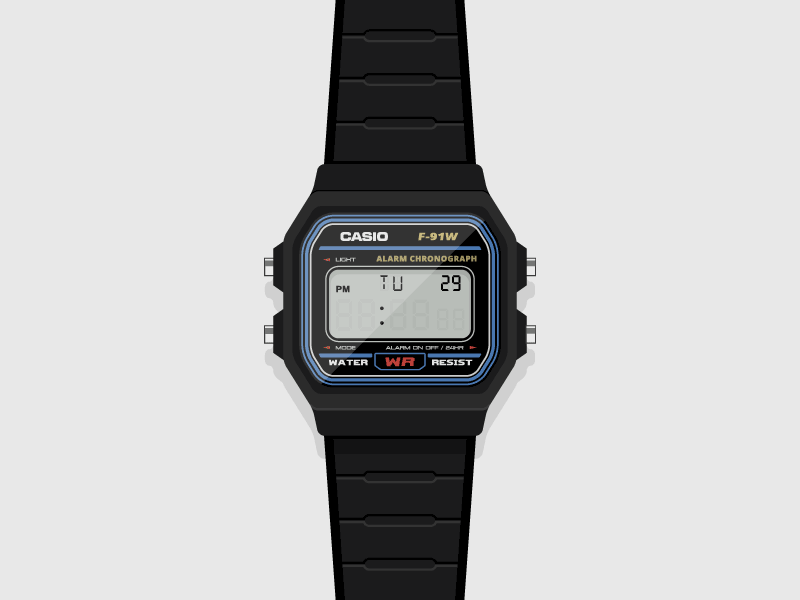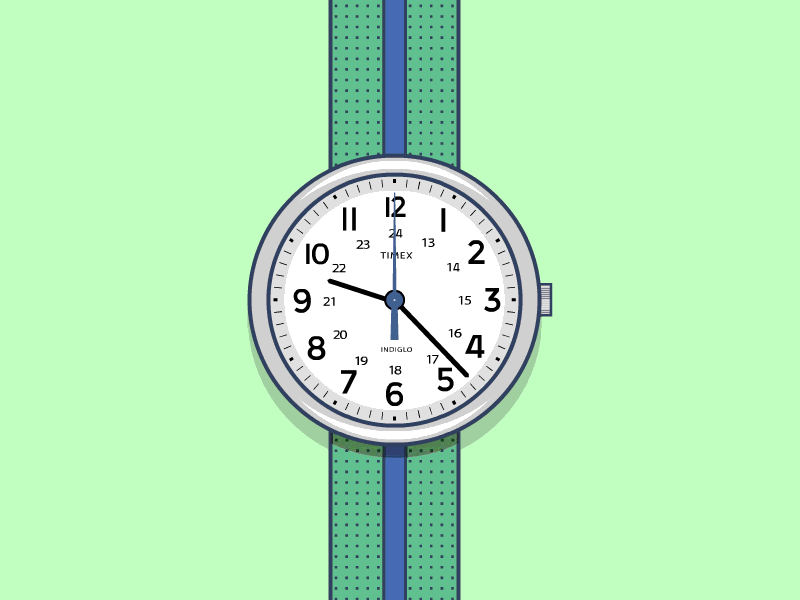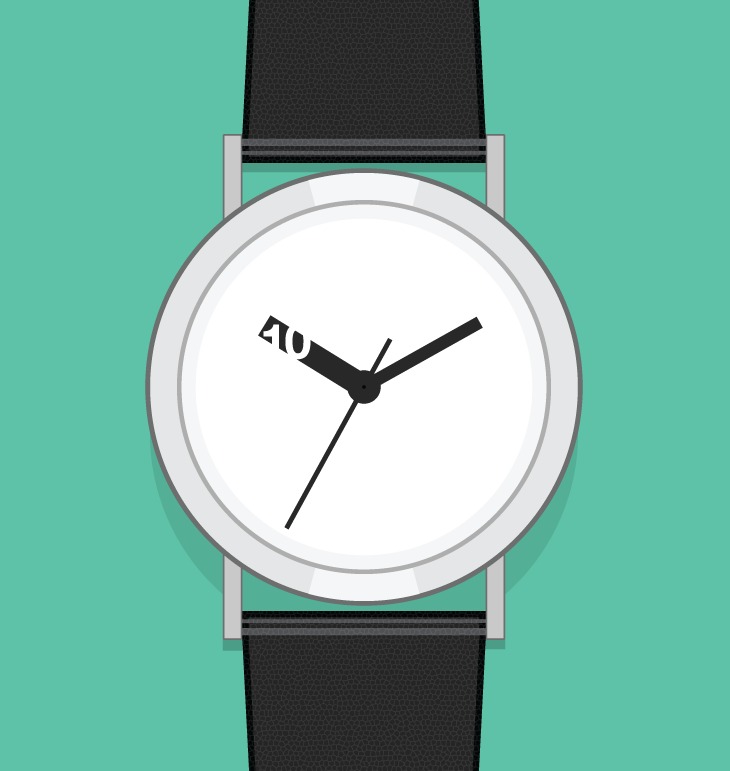
By day, Matt Johnston is a web designer and developer, and as a hobby, he digitally illustrates wrist watches on his website Wrist.im. About a year ago, Matt decided he needed to learn more sophisticated digital illustration, and to do so, he decided to create digital illustrations of some of the watches that he personally owned.
Matt explains that he was fascinated by the “user interface” of watches and the challenge of indicating the time in a clear, yet interesting manner. Johnston’s first project was to illustrate his simple Timex Weekender. Over time, Johnston has created a small collection of wrist watch illustrations, many of which include code that allows them to indicate the time in your web browser.

What I found so interesting about the Wrist.im project is the focus on watches that many seasoned watch lovers might consider basic or pedestrian. Perhaps Johnston’s most moving work is the digital recreation of a simple and timeless (and quite retro by today’s standards) Casio F-91W digital watch.
Ariel Adams: You are a software programmer and a designer. You also digitally illustrate watches on the side. How did that happen? How long have you been a watch guy and when and why did you start to incorporate it into your work skills?Matt Johnston: I’ve always loved making things. About twelve years ago, I began learning to design websites, and because it wasn’t enough just to see my designs in Photoshop, I learned to code. The next 6 years, I stumbled upon more and more freelance work until I was able to design and develop full-time. As a freelancer, I was forced to wear a lot of hats, but my passion was always found in design work. After years of designing brochure websites and blogs, I started looking for new design challenges through product design. My wife and I moved from Los Angeles to the San Francisco Bay Area so I could join a startup as the lead designer, and soon after, I co-founded a peer-to-peer boat rental startup, Boatbound.

Designing a new product from the ground-up has been one of the most challenging and rewarding experiences I’ve had as a designer, and still I’m looking for new challenges to tackle. That’s what lead me to start Wrist. As a designer, I’ve always been weakest in illustration, and I wanted to force myself to learn the skill. While considering ideas, I remembered an amazing illustrative project I’d followed in the past, Windows of New York.
Designer Jose Guizar posts weekly illustrations of windows he sees around New York City. They’re beautiful illustrations, and he’s able to pull out beauty from ordinary objects that are overlooked daily. His project got me thinking about other things that would be good to illustrate, and watches immediately came to mind. Movement and animation on the web has been an exciting subject for me to explore, so I thought that making the watches animated would be a perfect addition.
I’m relatively new to watch culture. It was only four years ago when I got my first watch as an adult. I’ve been drawn to watches initially for aesthetics, but since starting Wrist, have been learning more about watch culture and history. Now I can’t get enough of them, and already have a long wish list of my favorite watches, as I’m sure you do too.

AA: You mentioned that you are fascinated by the typography, movement, and interfaces of watches. Could you elaborate on that? How would you explain your interest to someone not in the design field?
MJ: The fundamental design goal of a watch is simple – communicate the time. The watch’s ‘interface’ is what a watch uses to communicate the time and allow the user to change the time. Some watches take that a step further and add date, day of the week, timers, etc., but the concept is the same. Because the goal is so simple, it gives watch designers so much creative freedom. Should there be numbers? If so, what style typeface should be used? What about a second hand? A chronograph? Each design decision is compounded with the next to create a unique work of art that will inform its user about the passing of time. These design decisions will determine whether the watch feels clean and modern, or simple and accessible, or whether it evokes images of our grandfather and his generation, or a distant future. That’s what a good design can do.
